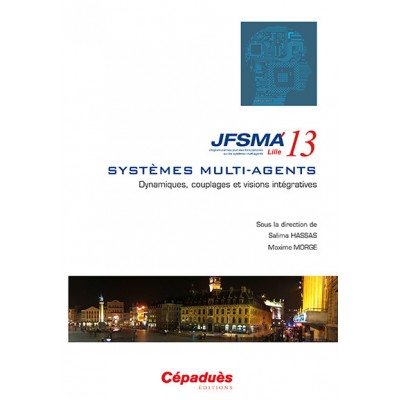Un mécanisme de composition de comportements pour agents virtuels
L'objectif de cet article est de présenter un mécanisme permettant l'intégration, dans un même processus décisionnel, de plusieurs théories, sous-systèmes ou architectures d'agents intelligents. Chaque composant ainsi intégré a la capacité de proposer des comportements à un module décisionnel chargé de l'intégration, la composition et l'arbitrage. Ce processus est ensuite évalué sur des scénarios assez simples afin de comparer la pertinence, la richesse et la crédibilité du comportement effectif des agents par rapport aux comportements proposés en entrée. Le but de ce mécanisme est, au minimum, de préserver la qualité des entrées, et autant que possible de produire des comportements jugés plus convaincants que chacune des entrées considérées séparément. Les applications sont nombreuses, mais nous présenterons en conclusion le déploiement de ce mécanisme dans un projet collaboratif de simulation urbaine.
Increasingly complex AI systems are now often faced with the use of a combination of various theories, subsystems of architectures, whose behavior proposals have to be integrated into one behavior generation mechanism. It is the aim of this paper to present such a behavior integration mechanism. It is then evaluated on a number of small scenarios, with the idea of comparing some single "input behaviors" with the combined "output behavior" in terms of concistency, richness and credibility. The goal of this mechanism is indeed to at least preserve the quality of the inputs, and whenever possible to produce a behavior that is judged more convincing than any of its inputs taken in isolation. Applications are many, but we sketch in a concluding section the current deployment of this mechanism in a collaborative project for urban simulation and its central unifying role in its agent architecture.

